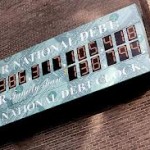Home > Wall Street > Hedge Funds – The Good, The Bad and The Train Wreck Coming
Hedge Funds – The Good, The Bad and The Train Wreck Coming
 The concept of “hedging”, or protecting investors from volatile and uncertain markets, is not new. In fact, the history of hedging has been traced to the creation of rice warehouse receipts in 17th century Japan. The creation of most “modern” hedging tools, however, came about in the commodity markets.
The concept of “hedging”, or protecting investors from volatile and uncertain markets, is not new. In fact, the history of hedging has been traced to the creation of rice warehouse receipts in 17th century Japan. The creation of most “modern” hedging tools, however, came about in the commodity markets.
Hedging simply refers to any defensive strategy designed to mitigate, or eliminate, risk. The mitigation, or elimination, of risk usually comes at a cost. Farmers, for example sell their product in advance of the actual harvest. They are interested in securing a price for their harvest today and let the speculator assume the risk of the uncertain outcome at harvest. If the price at harvest fetches more than what the farmer received, the speculator earns a (sometimes remarkable) profit. Of course the price at harvest may be lower than what the farmer received.
Existing world wide commodity markets are highly sophisticated, meeting the financial needs of farmers and forest products companies, as well as oil and mineral products companies. Participants in these markets may sell futures contracts to hedge against price declines. As mentioned above, while protecting themselves against future price declines, they also forfeit the right to additional profits if the prices of these commodities rise. Similarly, end users of commodities often purchase futures contracts to hedge their exposure against a future rise of a commodity price. A breakfast cereals company, for example, is more concerned with securing their cost of grain today, to enable the company to stabilize their pricing, than the potential for excess profit if the commodity declines in price.
The standardization of futures contracts on various exchanges created ease of transferability and liquidity, effectively inviting speculators into the future markets. While the term “speculator” invites snickers and raised eyebrows, speculators serve an important function: they willingly assume price risk that hedgers fear while simultaneously providing liquidity to a potentially illiquid market. The efficiency of the commodity markets is significantly enhanced by this financial collaboration.
Beginning about the mid 1970s the development of hedged financial instruments began to grow exponentially. Exchanges began to offer future instruments based on interest rate and currency contracts. With the success of these products additional “innovations” were created on equity indexes as well as options on hundreds of individual stocks. Then the banks and brokerage houses began to create customized, off-exchange instruments. Contracts of all stripes began to appear, some simple, and some are so complex I don’t believe anybody truly understands them.
My point is hedging serves an extremely important function. Unfortunately, Wall Street has (once again) taken a viable and important product and has managed to fundamentally abuse it. Warren Buffett, in the 2002 annual report of Berkshire Hathaway, freely discusses the abuses of derivatives and believes the exponential expansion of these products represents a systemic risk to world wide financial systems. Now that you have some sense of what hedging is, I would like to introduce you to Mr. Alfred Winslow Jones.
The Birth of Hedge Funds
Born in Melbourne, Australia, Alfred Winslow Jones has become something of an unsung, if not obscure, hero. By all accounts Jones was a brilliant man. After graduating from Harvard University in 1923 he traveled the world as a purser on a tramp steamer. During the 1930s he served as a journalist covering the Spanish Civil War and later served as vice counsel at the U.S. Embassy in Berlin during the rise of Nazi Germany. In 1941 Jones completed a doctorate in sociology at Columbia University. His thesis, Life, Liberty and Property was to become a standard sociology textbook. After his stint at Columbia, Jones became an associate editor of Fortune Magazine. While at Fortune, in 1948, Jones wrote an article entitled, Fashions in Forecasting. After writing this article Jones came to the conclusion that most professional money managers were… incompetent, at best.
In 1949 Jones took his life savings of $40,000, raised an additional $60,000 from investors, and launched A. W. Jones & Company. It is interesting to note that Jones had, from the beginning, virtually all his own money at risk. (Wall Street could take a lesson!) The fund is still in existence and is currently run by his son-in-law. Jones passed away in 1989.
The original Jones strategy was not that complicated. Jones would purchase securities that he believed were undervalued. He would then sell short an equal amount of securities he believed were overvalued. Selling short, is simply selling a security that one does not already own. The seller, in effect, borrows stock – from the brokerage company – in order to sell it. If the price of the borrowed security declines, which is the hope of short sellers, it enables the speculator to buy back the security at a lower price from which it was sold to settle their account, pay the cost of borrowing the security, and realize a profit as the account is settled.
Jones postulated that by equaling his long positions with his short positions he would be able to create a market neutral investment strategy. In theory, if the market went to zero he would breakeven. The strategy of “hedging” his long positions with counterbalanced short positions meant he should theoretically do well irrespective of the market direction. Jones was also not adverse to using leverage to further enhance returns.
Jones managed to spend 17 years in investment obscurity. Ironically, it was a young Fortune reporter, Carol Loomis, who “discovered” Jones. In April of 1966 Ms. Loomis penned a Fortune article entitled The Jones Nobody Keeps Up With. Ms. Loomis used the term “hedged fund” in her article about Mr. Jones to explain his approach and so popularized the term. (Ms. Loomis today continues to write for Fortune. She also edits Warren Buffett’s annual letter to shareholders of Berkshire Hathaway.)
PIPs vs. Hedge Funds
Interestingly, there is really no such thing as a “hedge fund”. I say this because the term hedge fund, while in common use, is neither defined nor used in federal securities laws. Today, the scope of the term hedge fund includes a mishmash of any pooled investment product typically not registered under federal securities laws as public corporations, investment companies, or broker-dealers. They are typically structured as foreign or domestic limited partnerships which provide pass-through tax treatment of earnings. As a practical reality, the term “hedge fund” has become little more than a marketing tool.
Almost all hedge funds are Private Investment Partnerships (PIPs), but not all PIPs are hedge funds, because not all PIPs hedge their long positions with short positions as did Mr. Jones.
Well known and brilliant investors like George Soros, Michael Steinhardt, and Julian Robertson, as well as Warren Buffett and Charlie Munger, have all operated within the private partnership format. If Messrs. Buffett and Munger were still managing their partnerships today these partnerships would be called hedge funds even though shorting securities to hedge market risk was not central to their investment approach. (The Buffett Partnership, after 13 years of operation, was dissolved and Berkshire Hathaway became Mr. Buffett’s primary investment vehicle. Mr. Munger similarly dissolved his partnership to devote his energies to Berkshire Hathaway.)
PIPs are less regulated and have greater investment flexibility than mutual funds. This flexibility can be a great benefit in the hands of a prudent investor, but a potential tragedy in the hands of a speculator or incompetent.
In exchange for operating is a less regulated environment the Security and Exchange Commission (SEC) places restrictions on how PIPs may approach the public and who may invest in them. The SEC, for example, prohibits PIPs from advertising or promoting their partnerships. In addition, PIPs are limited to a fixed number of “accredited investors”, as defined by the SEC.
One type of PIP can accept 499 investors before it is required to initiate public filings with the SEC, but each investor must have $5 million of investable assets. The second type of PIP is limited to 99 investors; the accreditation test is either $1 million of net worth exclusive of one’s primary residance, or $200,000 of annual income for each of the past two years, or $300,000 for a married couple. Because of these requirements and restrictions, which are intended to protect less sophisticated investors, hedge funds have developed a reputation for being secretive, operating in an atmosphere shrouded in silence, where information is sparse and, as a result, misperceptions flourish.
These so called hedge funds vary widely in size, investment strategies and the use of leverage, and bear no resemblance to Mr. Jones’s concept. While some PIPs (hedge funds) control small pools of money and pursue conservative strategies, other PIPs are extremely aggressive and employ large amounts of capital with extraordinary leverage.
Hedge funds have been created to trade domestic as well as foreign securities, government securities, commodities, financial futures, options, and foreign currencies; there are a variety of sector equity funds, dedicated short funds, convertible funds, merger arbitrage funds, technical trading funds, distressed securities funds, global macro funds, emerging market funds and funds employing derivative strategies of all stripes. Some are involved in “dynamic” trading strategies while others seek to arbitrage pricing anomalies (such as a difference between prices for the same asset in two different markets.) I could go on, but I think you get the picture. The list of investment possibilities and approaches is limited only by the imagination of the money manager and/or marketing department. So you tell me, what is a hedge fund? I haven’t a clue.
A Disaster Waiting to Happen
With the stock market in disarray, and with so many investors pummeled since 2008, hedge funds are attracting all manner of innocent investors due to the allure of the forbidden and the specter of performance. The popular press, with their own agenda to sell advertising space, delights in providing glimpses into this shrouded, obscure world of “private” money managers and their wealthy clients.
Now consider this. The word is out of Cambridge, Massachusetts that the most favored career path for the most recent crop of Harvard graduates is – you guessed it – to work in the hedge fund industry. According to Carol Loomis, quoting a successful hedge fund manager, “Business school grads are often a leading indicator of trouble. Think about the mad rush into investment banking, management consulting, and tech. If they now want hedge funds, are we the next to go?”
If you want to watch a stampede, simply wave a dollar bill before a gaggle of investment bankers. It should not be a surprise, as the hedge fund trend gains momentum, the wire houses (i.e. Merrill Lynch, J.P. Morgan, Goldman Sachs, etc.) have sniffed out profit potential. (Like pigs to truffles, Wall Street is to cash.) And the target group of prospects, you inquire? The same trusting investors who were recently pillaged who are eagerly seeking to make up their losses in “innovative” ways.
Once again these same amateur investors, who unwittingly assumed the role of high risk investment bankers by effectively underwriting companies with little revenues, no profits, huge expenses and only theoretical growth prospects – what has come to be called the dot.com mania – these same innocents are once again being lead to the precipice to invest whatever capital they may have salvaged since 2008. And how are these innocents being seduced this time? The new investment product leading investors to the promised land of wealth and privilege is called – a drum roll please – “Fund of Funds”.
Fund of Funds
A fund of funds is nothing more than an intermediary, typically sponsored by brokerages, banks, and independent consultants, who package and distribute product; in this case fractional interests of a basket of hedge funds. The entry level to purchase a fund of funds is surprisingly low, $25,000 – side stepping all the investor accreditation rules mentioned above. This is a middle class investment product, sold to the unsuspecting and naive – the folks the SEC is attempting to protect in the first place.
The pitch to these amateur investors, so eager to get aboard the hedge fund train to riches, is to spread their hedge fund dollars – to diversify. The fund of funds product invests in a variety of hedge funds. The investor simply invests in the fund of funds. Instant diversification.
I will let you in on a secret: you cannot improve your investment experience by diversifying an already poor investment by simply adding one hundred additional inferior investments. Somehow this simple truth seems to have been lost on the legions of innocents (and their equally innocent advisors) who call themselves investors.
The vast majority of investors – both professional and amateur – forever hopeful of great riches, willingly set forth in a leaky vessel, captained by an incompetent. Is it any wonder the vast majority end up shipwrecked? The success of the hedge fund ship, like any other investment management enterprise, will almost exclusively be a function of the captain.
The likelihood of a hedge fund train wreck grows with each passing day. As I was pondering the implications of the financial wreck occurring in the wake of the dot.com disaster, I recalled the not-so-joking mantra of the financial services industry: “…the firm made money, and the broker made money – two out of three isn’t bad.”
To learn more about Marshall Serwitz view his Paladin Registry profile.
Other posts from Marshall Serwitz
Is the Market Headed Higher or Lower? Are Investors Impostors?
Is a tomato a fruit, or is a tomato a vegetable? Botanically, tomatoes are a fruit. But in...
Retirement Portfolios – Shifting from Accumulation to Distribution
Creating sustainable retirement portfolios is as much art as science. The tendency to view our annual capital projections...
Human Overconfidence + A Post-Crisis World = Even More Indebtedness
I am endlessly fascinated by the unwitting and reflexive expressions of our genetic programing. No matter how much...





